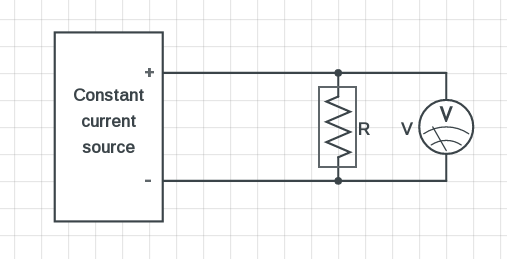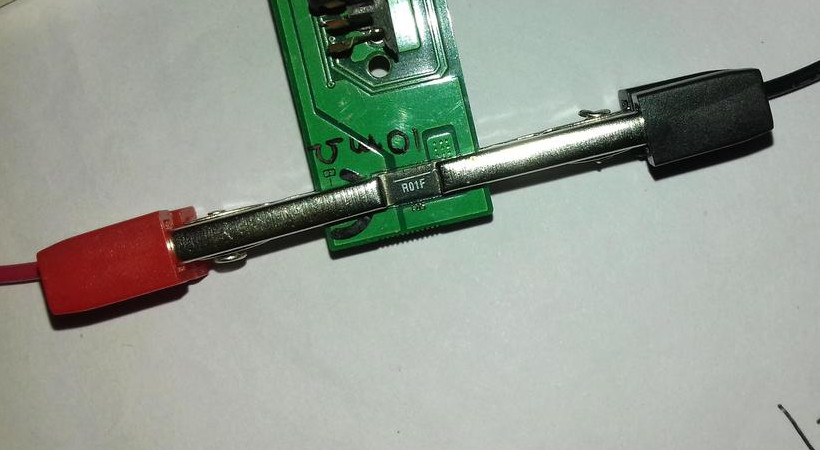We often need some low value resistors, less than 1 Ohm. Mostly as current sensing resistors in power electronics projects. You can't measure less then 1 Ohm with cheap multimeters. So here's a low resistance measurement method without a expensive miliOhm meter.
There's some other tricks to measure low resistance, here I'm going to use the constant current source method.
I'm using this method to measure homemade wire wound resistors with satisfactory results. Lets get started.
Low resistance measurement method
Basically the trick is to pass a stable known amount of current through the low value resistor and measure the voltage drop across it.

In the above picture, R is the unknown resistor and V is a multimeter, set to read millivolts. Obviously the multimeter is connected permanently as shown in picture.
Ohm's law is used to calculate the resistance,
So, you're going to need a constant current source, here's a reasonably accurate LM317 constant current source circuit, you can use that.
After setting up the circuit like above, you've to measure the voltage across the unknown resistor and devide it by the constant current. That's all you need to do to determine the resistor's value.
Measuring tips, test and example
Though this method is fairly accurate but it's accuracy directly depends on the current source and the multimeter.
So you've to check the accuracy of the current source and the calculate any possible offset of the multimeter by comparing with a known stable voltage source.
It's accuracy also depends how you're measuring the voltage drop across the resistor, and how the circuit is constructed. Few tips below.
- Use thick and short connecting wires, be sure to make the joints tight.
- After connecting everything, wait a minute before taking the measurements.
- Measure the voltage drop across the resistor as close as possible, more about this later.
- Don't touch any conductive part of the multimeter probes while taking measurements.
- And don't place any wire conducting AC near the setup, interference could change readings.
Also be careful while measuring in millivolts, don't touch the probes to any other high voltage(>0.2V) part of the circuit.
Now, why you should connect the multimeter probes as close as possible to the resistor ?
Simply because connecting probes to different location could dramatically change the readings !

In the above picture I was measuring a 10 mΩ current sensing resistor. The voltage drop between the resistor's solder pad was exactly 10 mV at almost 1 Amp current, but it was around 15-18 mV between the clips ! Huge difference.
So how was my experience ? With the cheapest(presumably) multimeter, I can measure low value resistors with around 2% accuracy respective to their marked value. I think that's great for such a inexpensive setup.
Finally, what do you think about this low resistance measurement method? Share you thoughts in the comment section.
Leave a Reply